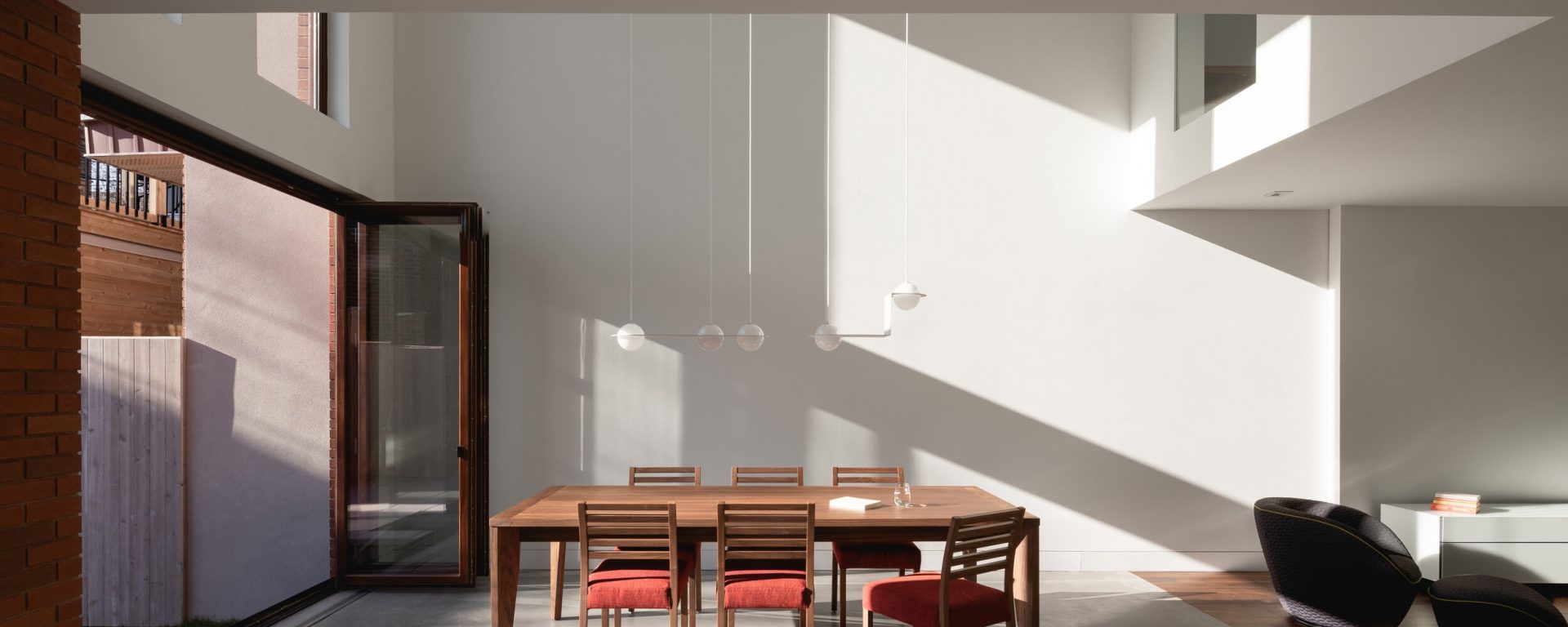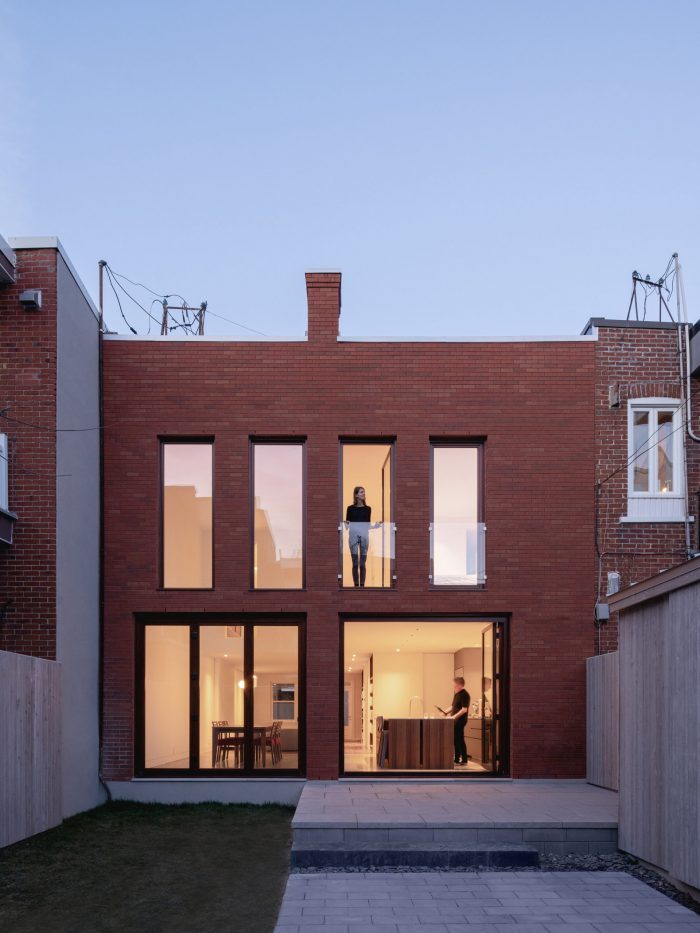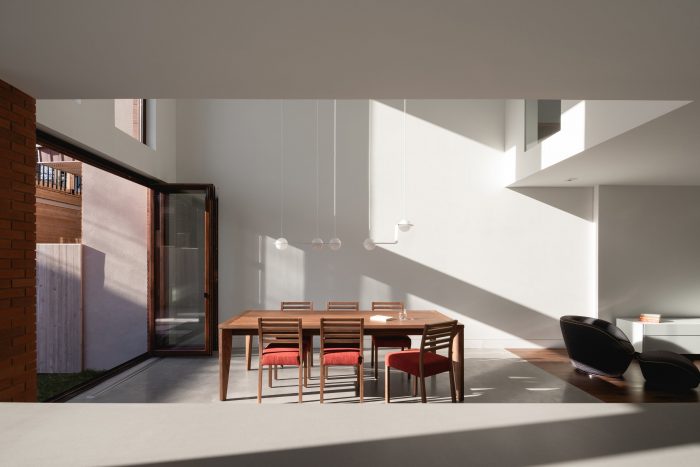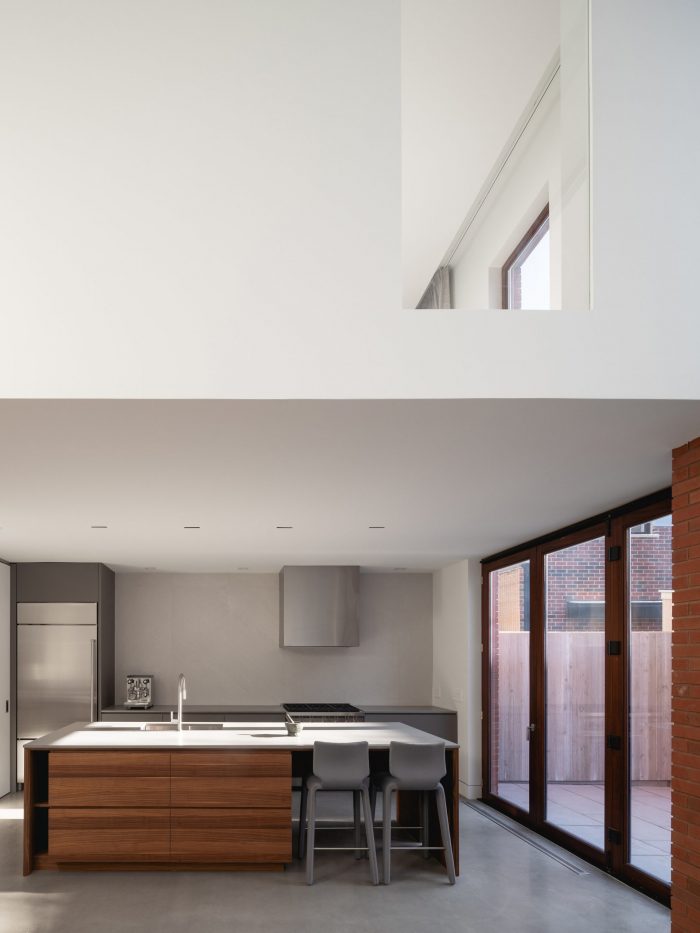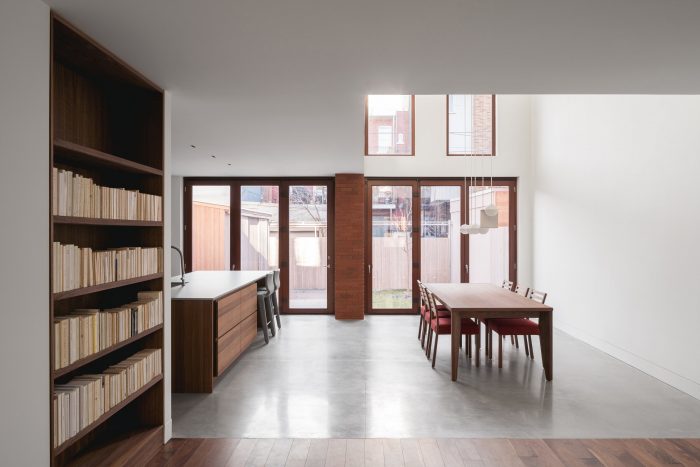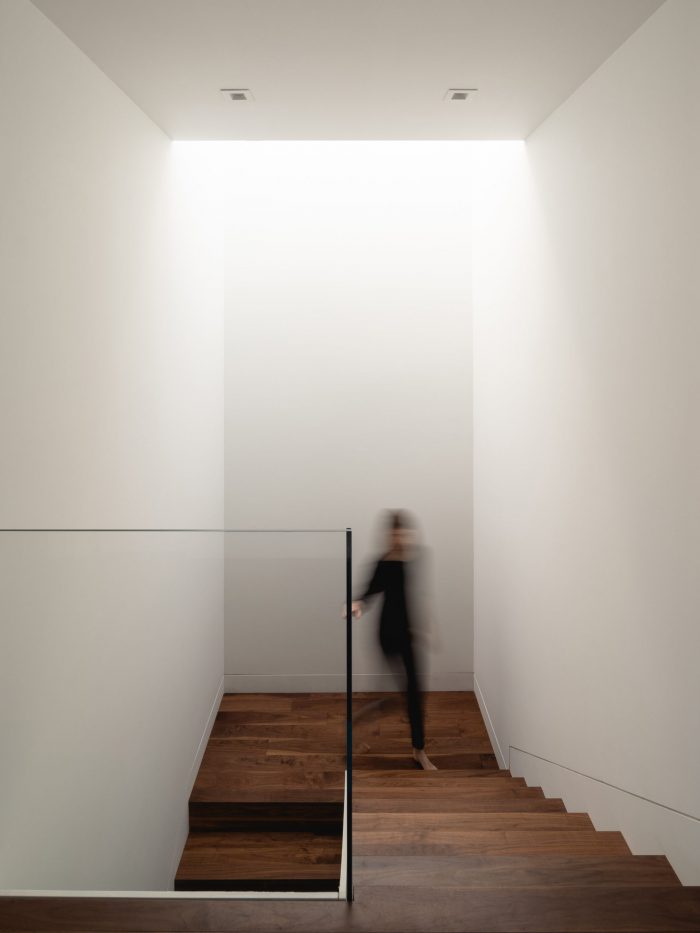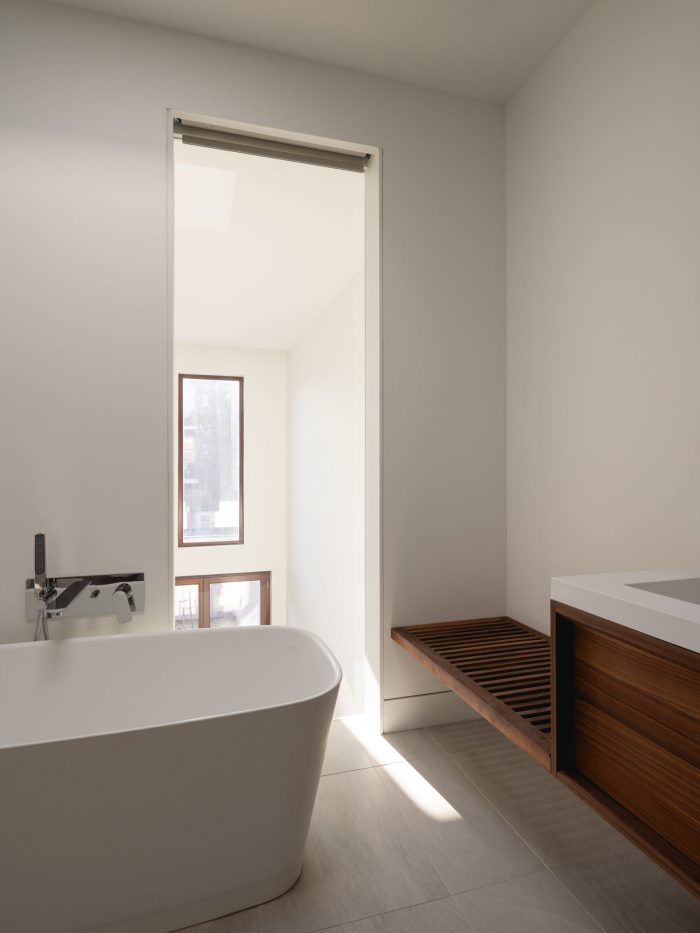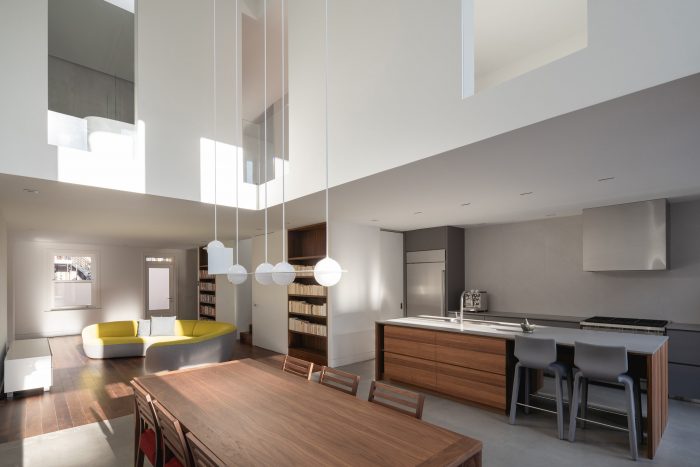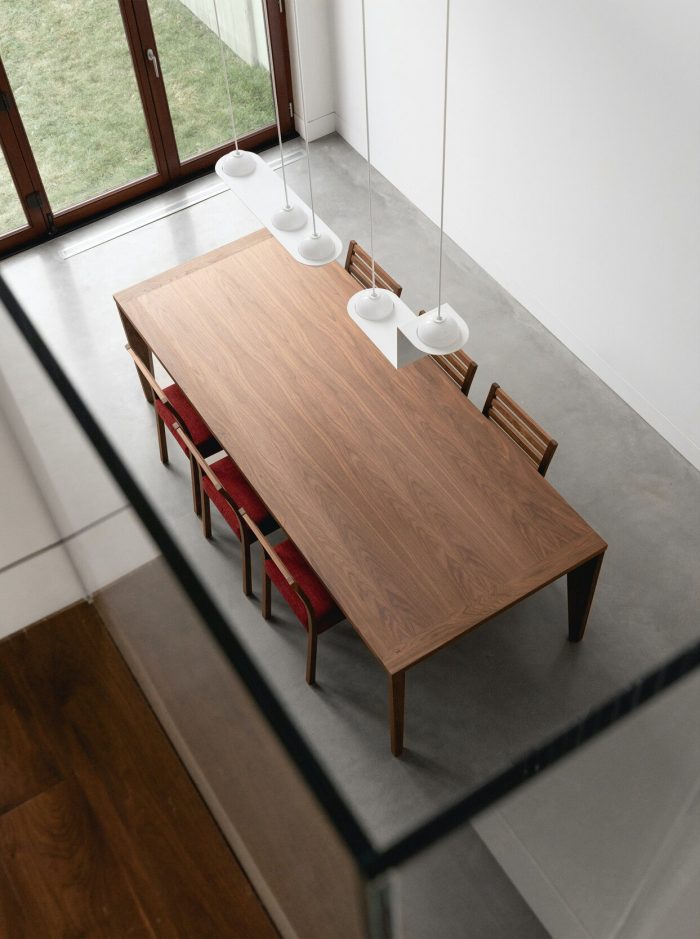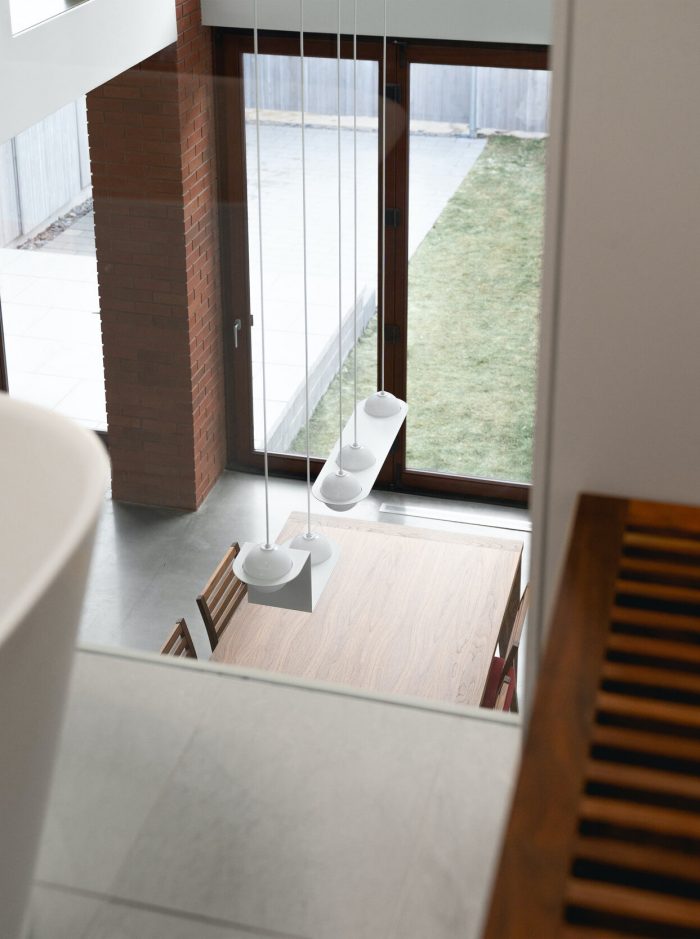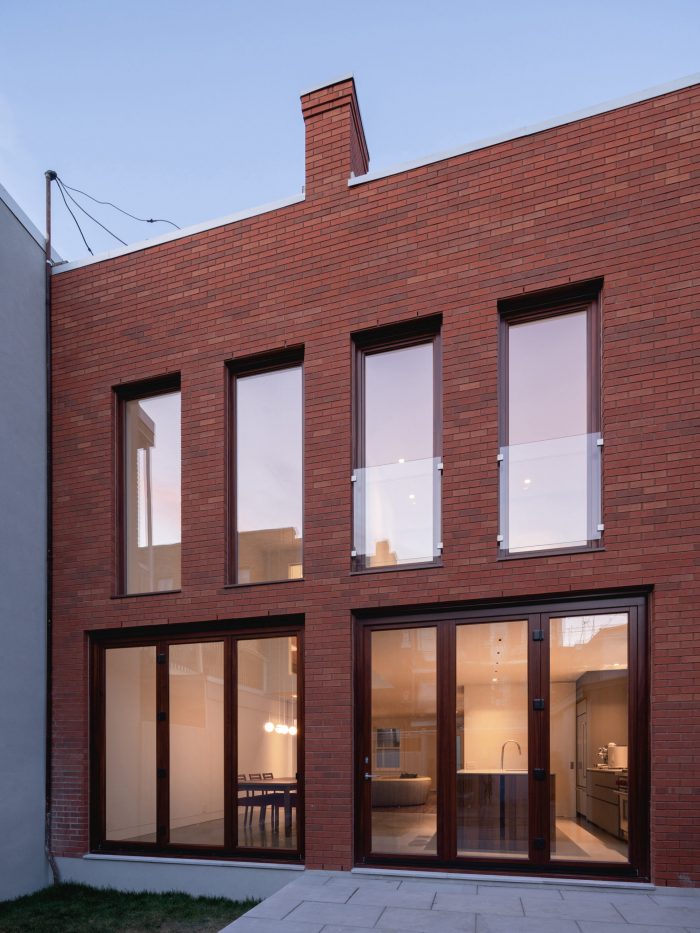砖房是一个位于加拿大蒙特利尔的极简住宅,由娜塔莉迪安建筑设计。蒙特利尔市以其生机勃勃的社区和替代的生活而闻名,其特色是其传统街道,两旁是联排别墅。通常是百年纪念,这三层楼的建筑越来越不适应当代的生活方式。为了保护这一城市遗产,蒙特利尔的几位建筑师正试图让他们重获新生。
位于加斯佩街(rue deGaspé)上的一座小楼MAISON de BRIQUE,非常靠近受欢迎的Jean-Talon市场,最近一次重大改造,标志着Natalie Dionne建筑。该计划包括接管三个中等大小的住宅,至少它们成为一个单一的生活空间,明亮,通风和开放的露台庭院,很少使用,直到那时。
它的初衷是明确的:替换保留现有立面的元素。除更换砖块外,后墙的主要变化是合并了更加宽大的开口。二楼的窗户被拉长,跟随着周期窗的脚步,尊重邻里的类型。迅速的大玻璃门窗遵循上层窗户的节奏。
一个现存的壁炉,见证了一个过去的时代,现在承担着一个审美而不是功利的角色。它加强了后立面的对称性,给人一种梦幻般的感觉。从内到外,它成为新旧之间,从内到外的联系。生活空间重叠了整个一楼。厨房直接通向餐厅,餐厅通向楼上的天花板。
这一姿态透露出两卷,主卧和浴室,似乎悬挂在一楼。在两卷书的交汇处插入了一个小阳台。餐厅空间的开口提供了惊人的视野,无论是内部还是朝向车道。楼上的隔墙已仔细划分,以确保房间之间的流动性和替代。安装在另一个时代的天窗已经变形,让头顶上的灯光,沐浴中央楼梯和浴室。
Brick House is a minimal residence located in Montreal, Canada, designed by Natalie Dionne Architecture. Recognized for its lively neighborhoods and its quality of life, the city of Montreal is characterized by its traditional streets, lined with townhouses. Often centenary, these two or three story buildings are less and less adapted to contemporary lifestyles. In order to preserve this urban heritage, several Montreal architects are trying to give them a new lease of life.
MAISON de BRIQUE, a small building located on rue de Gaspé very close to the popular Jean-Talon Market, was recently undergoing a major transformation, signed Natalie Dionne Architecture. The program consisted of taking over three modest-sized dwellings and making them a single living space, bright, airy and open onto an outdoor courtyard that had been little used until then.
The architectural intervention can easily be read at the back of the building. The original intention was clear: to preserve the elements of the existing facade as much as possible. In addition to replacing the brick, the main change to the rear wall was the integration of more generous openings. The windows on the second floor, elongated, follow in the footsteps of period windows and respect the typology of the neighborhood. The large glass doors / windows on the ground floor follow the rhythm of the windows on the upper floor.
An existing fireplace, witness to a bygone era, now assumes an aesthetic rather than a utilitarian role. It reinforces the symmetry of the rear facade and gives it a touch of fantasy. Apparent inside and out, it becomes a link between the old and the new, between inside and outside. The living spaces occupy the entire ground floor. The kitchen leads directly to the dining room which opens up to the ceiling of the upper floor.
This gesture reveals two volumes, that of the master bedroom and that of the bathroom, which seem to hang above the ground floor. A small balcony is inserted at the meeting point of the two volumes. Openings opening onto the dining room space offer astonishing views, both on the interiors and towards the lane. Upstairs, the partitions have been carefully aligned to ensure fluidity and transparency between the rooms. Installed in another era, the skylights have metamorphosed and let in an overhead light that floods the central staircase and the bathroom with light.
Design: Natalie Dionne Architecture
Photography: Raphaël Thibodeau

